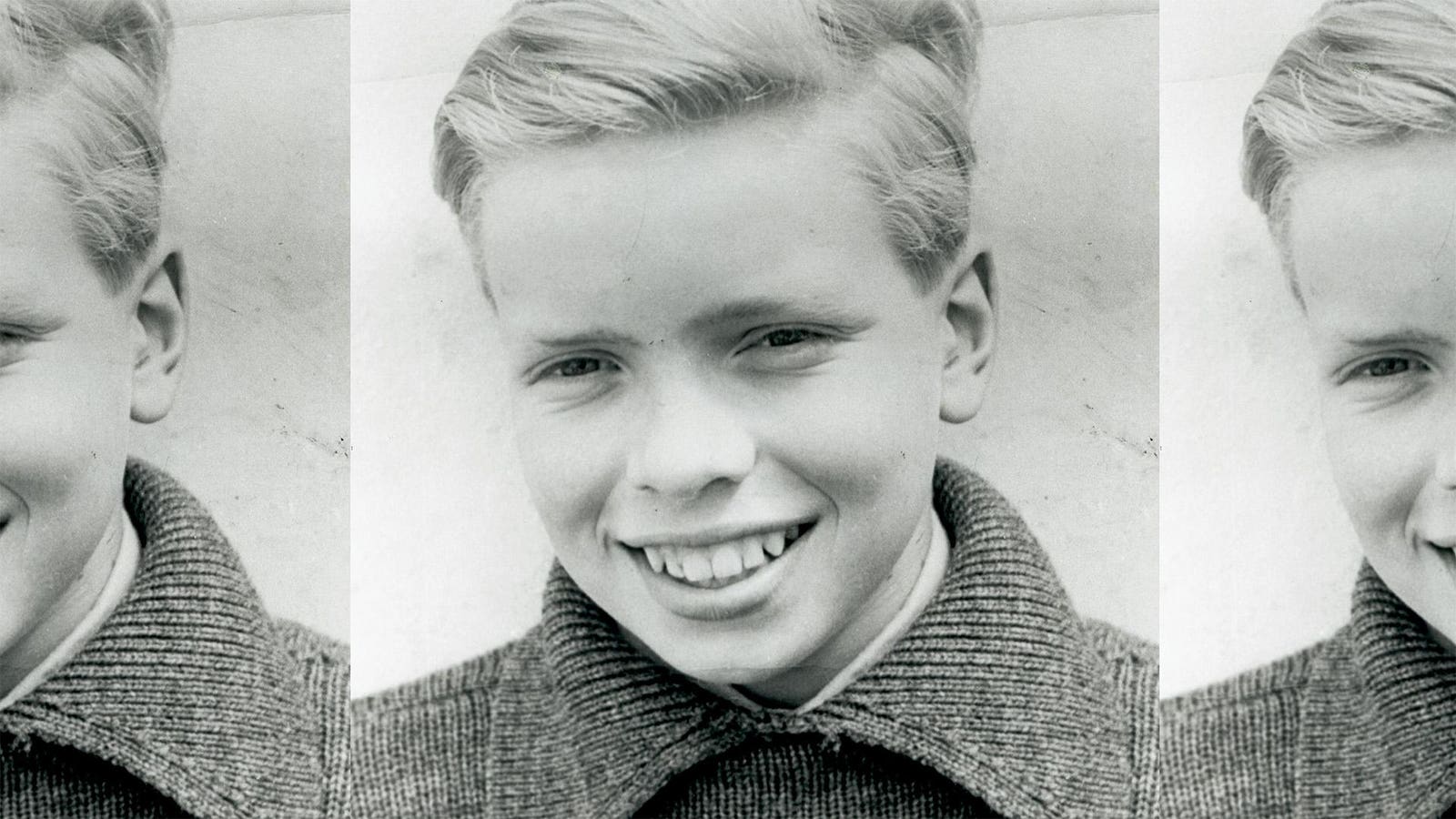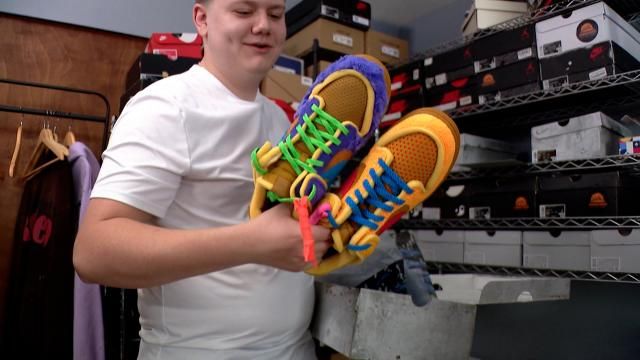As the AI frenzy drives US stock markets higher, one tech company’s shares have jumped almost 50% this year, outperforming the likes of Nvidia, Microsoft, and Meta — all while it celebrates its 30th anniversary.
Dot-com pioneer eBay, which sold its first item (a broken laser pointer) months after Amazon shipped its first book, has lost ground as the competition in e-commerce has proliferated since then. But under CEO Jamie Iannone, it is repositioning itself through an unusual combination of returning to its roots, adding upmarket offerings, and casting itself as one of the winners of this era’s defining technological disruption.
Iannone worked at eBay from 2001 to 2009, but left to run Barnes & Noble’s NOOK e-book business and then led e-commerce efforts at Sam’s Club and its parent company, Walmart. He returned to eBay as its CEO in April 2020, in time for a pandemic boom in online shopping that could not be sustained once people started spending less time in their homes.
Iannone’s strategy since then has begun to deliver growth above Wall Street’s expectations. At its core is a focus on eBay’s most passionate users, and the application of AI to the vast data set that comes from having 134 million active buyers, 2.4 billion listings, and 30 years of proprietary pricing and sales records.
Excel at the core before building out
When Iannone got back to eBay, he found it was “too complacent” about its chances of succeeding as a one-size-fits-all marketplace. Instead, he says, “I thought that if eBay could really excel, vertical by vertical, in what we needed to do for enthusiasts and raise the customer satisfaction there, that would be this phenomenal transformation.”
He refocused his team on some of eBay’s original strengths, such as used and refurbished items, which have grown from a third of its sales to more than 40%. That had the side benefit of building a hedge against economic slowdowns, as such merchandise often appeals to consumers who are tightening their belts.
At the same time, Iannone overhauled the eBay experience for customers in a handful of “focus categories” such as sneakers, watches, and handbags, where it could build more trust and loyalty with high-spending enthusiasts by authenticating secondhand luxury items, offering warranties, and tailoring marketing. Such efforts have come at some cost, but sales growth in those categories picked up from 5% last year to 10% in the latest quarter.
Much of eBay’s marketing has targeted the 16 million enthusiasts who, it says, account for 70% of the value of goods sold on its site. It partnered with the McLaren Formula 1 team to promote its sizable auto parts business, for example, and with influencers such as Chappell Roan, whose Met Gala outfit was assembled from eBay purchases.
Investments aimed at key customers pay off across the business, Iannone says. Not only can it take the initiatives that work best to other categories over time, but “if we have a handbag buyer come in who’ll spend $1,500 in handbags, they’ll spend over $5,000 in other categories,” he claims.
Reducing friction and showcasing AI wins
Iannone likes to say that the average household has $3,000 to $4,000 of possessions that they could sell on eBay, underscoring the company’s mission of “creating economic opportunity for all.” But he estimates that fewer than 20% of those items currently end up online, because so many people have found the process of listing them too onerous.
“Our competitor was friction in the process,” he says, but AI has been “a real game-changer” in helping eBay reduce that friction. A user wondering whether to sell a trading card, for example, can now snap a picture with their phone, and eBay’s AI tools will identify the collectible, draft a description of it, suggest an attractive background for the image, and offer advice on how to price it.
“All of a sudden, you can unlock this stuff in seconds,” Iannone says, adding that about 10 million sellers have so far used such tools to list more than 200 million items. Chatbots’ ability to answer potential buyers’ questions about an item’s condition or shipping costs, meanwhile, can spare sellers from having to respond to time-consuming messages.
Behind the scenes, eBay is using AI to identify trends it can jump on, from clothing resembling Taylor Swift’s engagement dress to the vintage Oasis merchandise that became popular again when the band went on tour. It has also deployed the technology to improve the wording of the emails it sends to customers, prompting 40% more engagement through sharper subject lines.
Such initiatives have been propelled by a culture of spreading AI expertise through the company, and showcasing the best of its AI projects to employees so they understand what can be replicated, or adapted, by their own teams.
Iannone recently brought thousands of colleagues together on eBay’s San Jose campus for an “AI week” with speakers from the likes of OpenAI and presentations from two dozen of its own employees, selected from “hundreds” who had written white papers on AI use cases.
He also launched a program that places “AI ambassadors” in every corner of the business, from engineering to finance, who can help each area understand how best to use the latest open source and proprietary AI tools.
Courting customers for their ideas
“If your employees really understand what you’re going after, and you give them the freedom, they will really create amazing things for you,” Iannone says, but he sees eBay’s customers as its other greatest source of inspiration. “They’re on the site 24/7, and they have the best ideas about what could help them.”
Word of mouth recommendations are eBay’s biggest source of new business, so Iannone puts a premium on engaging the site’s most ardent users. In August, he held the first in-person “eBay Open” event since the pandemic, gathering thousands of its biggest US sellers in Las Vegas for two days of workshops.
The sellers entered through a “clapping tunnel” of applauding eBay staff, with Iannone at the end, offering high fives and selfies. (“We all know that we have jobs because of them,” he explains.) The agenda included several feedback sessions, in which eBay’s most active users were invited to tell the company what it could improve.
Iannone says his own conversations with eBay users have prompted changes, such as raising the limit on the number of photographs featured in each handbag listing, and alerts that advise sellers when a buyer is loyal enough to merit a special offer or a personalized note.
“When the CEO is talking to sellers and buyers all the time, and then the whole organization starts doing that, you can massively improve the pace of innovation,” he says. For the same reason, he encourages staff to buy and sell on the site regularly. His own recent purchases include a pair of refurbished headphones for his daughter. (“She gets a two-year warranty. A new product comes with, like, 90 days or a year,” he raves.)
The CEO as AI role model
Iannone’s AI agenda extends to commissioning AI-written “walk-on music” for his appearance at the eBay Open event, themed to its latest marketing campaign. For the company’s AI week and another recent gathering of senior managers, he went one step further, using an AI video generator to create a three-minute film of his vision for the company’s future.
“I built that with one other person over a couple of days,” he says. To have done something similar in the past, “I would have gone to an agency, written a creative brief, probably spent hundreds of thousands, if not a million dollars, to shoot all that creative, etc. And me and one other person were able to put that together, and people were blown away by it.”
But that was a few months ago, and the tool he made the video with has since been surpassed by Google’s Veo 3, he reflects. “The leading edge is changing all the time.”









